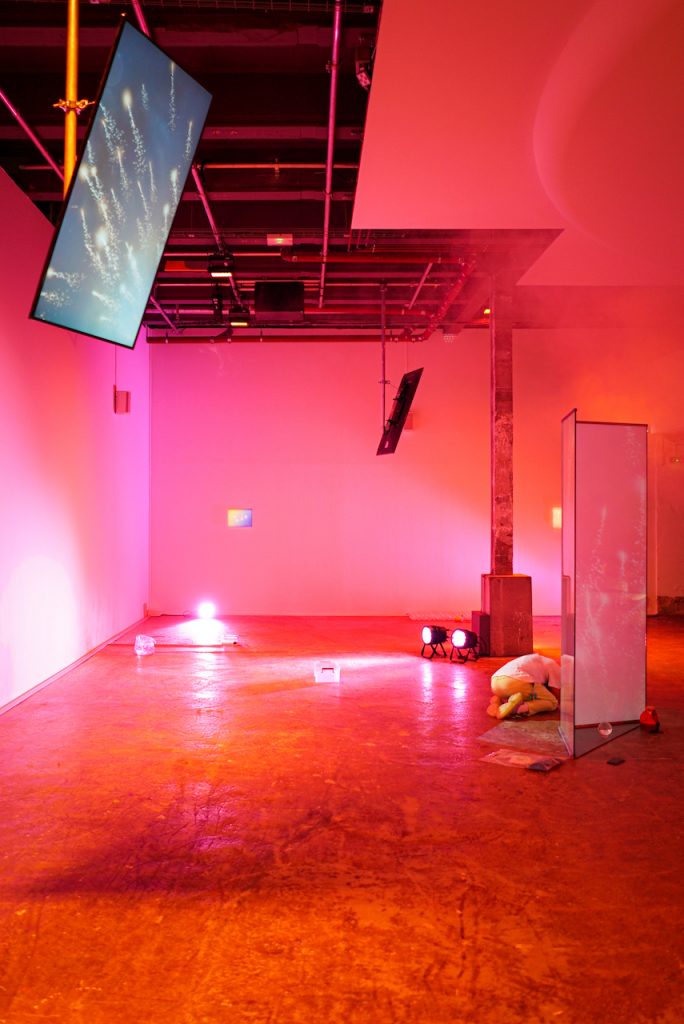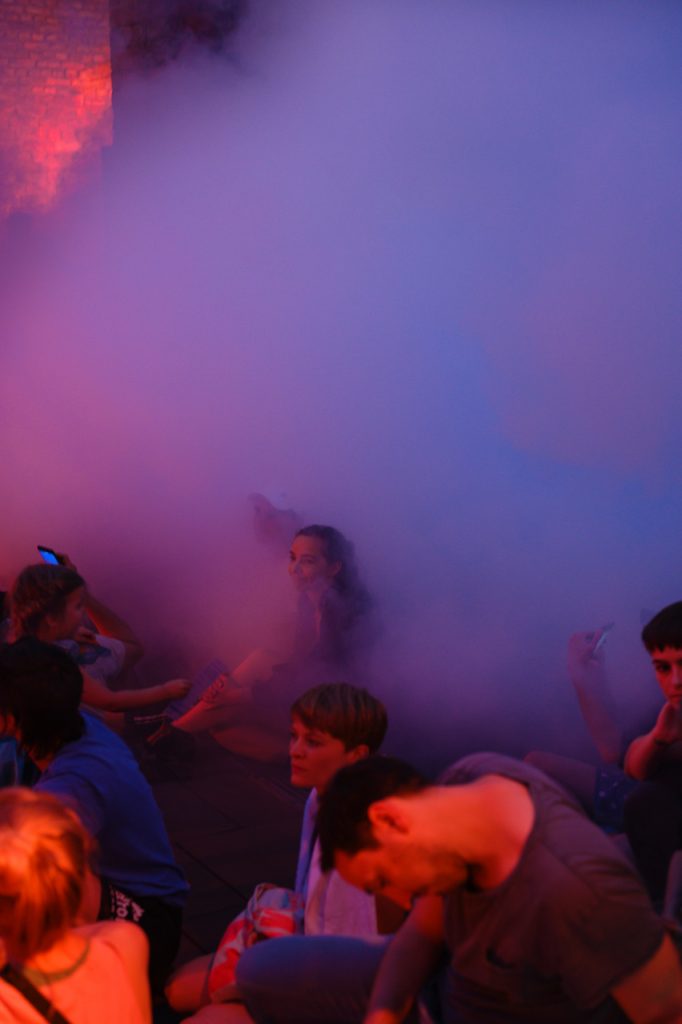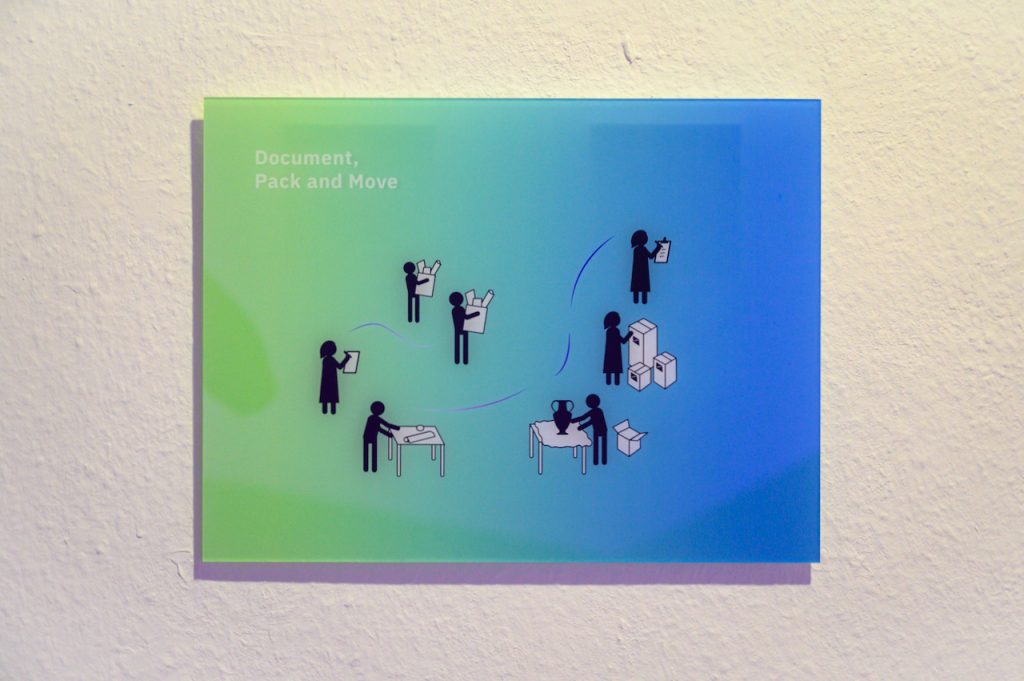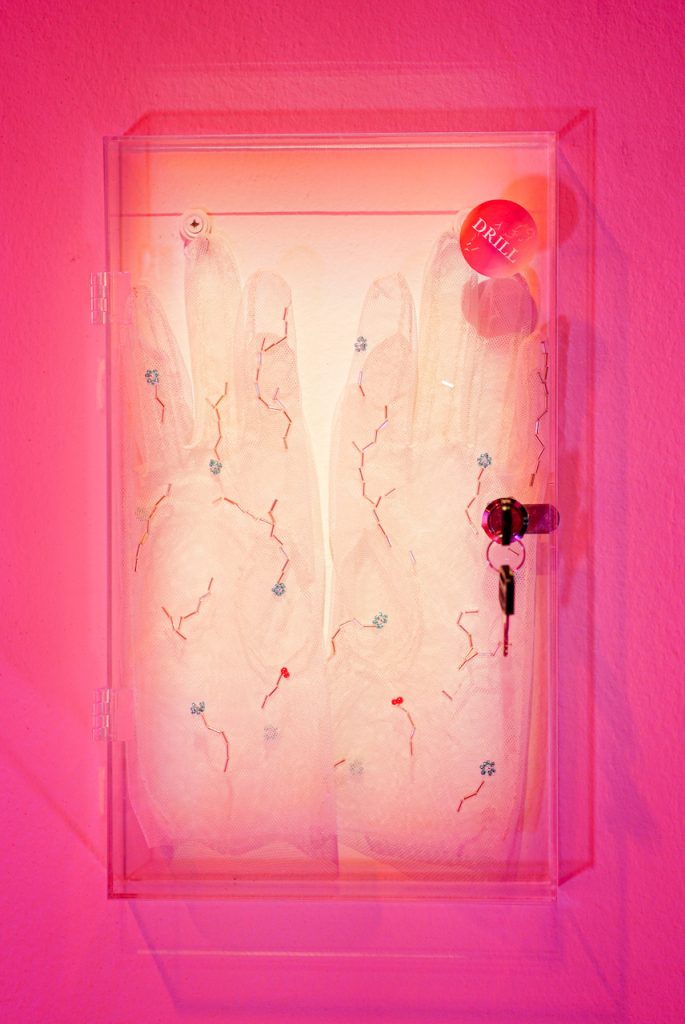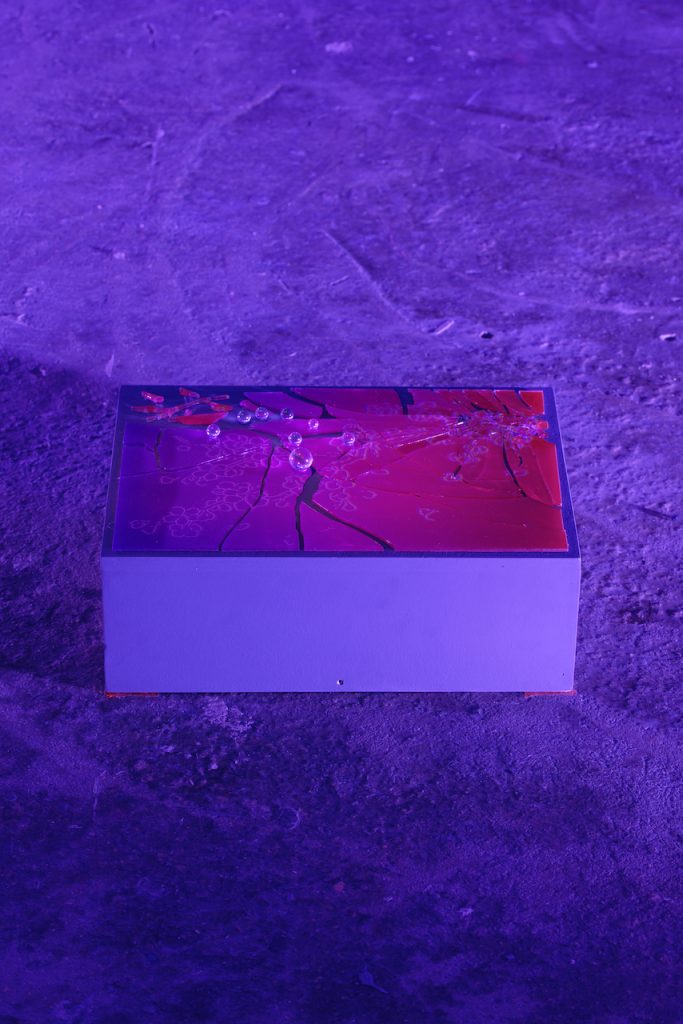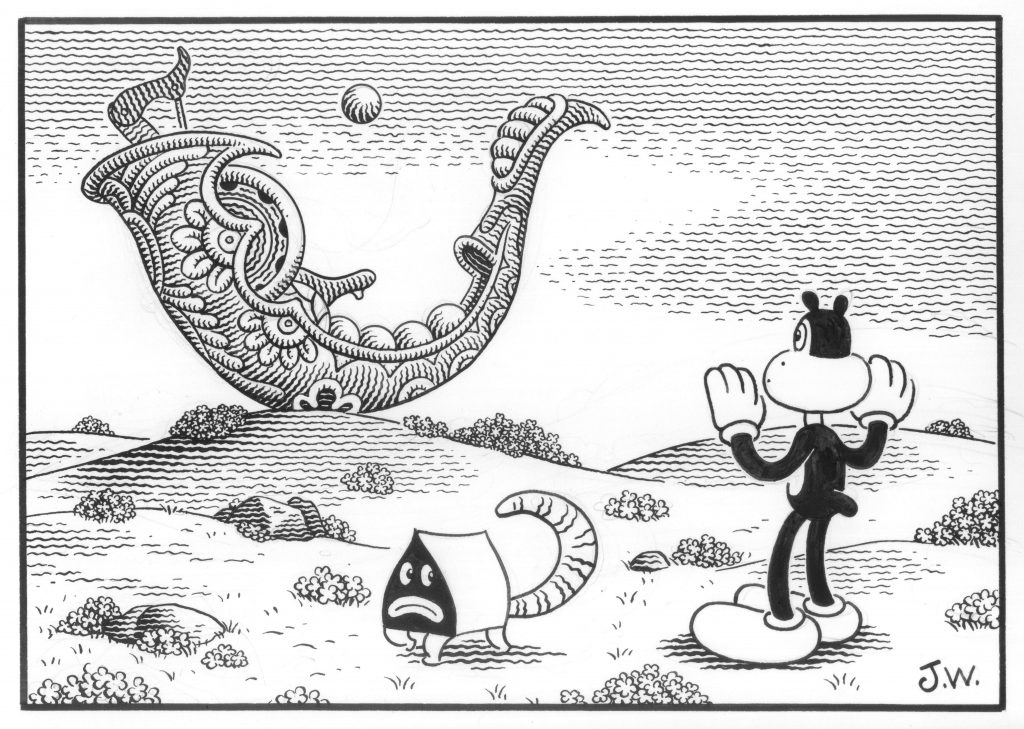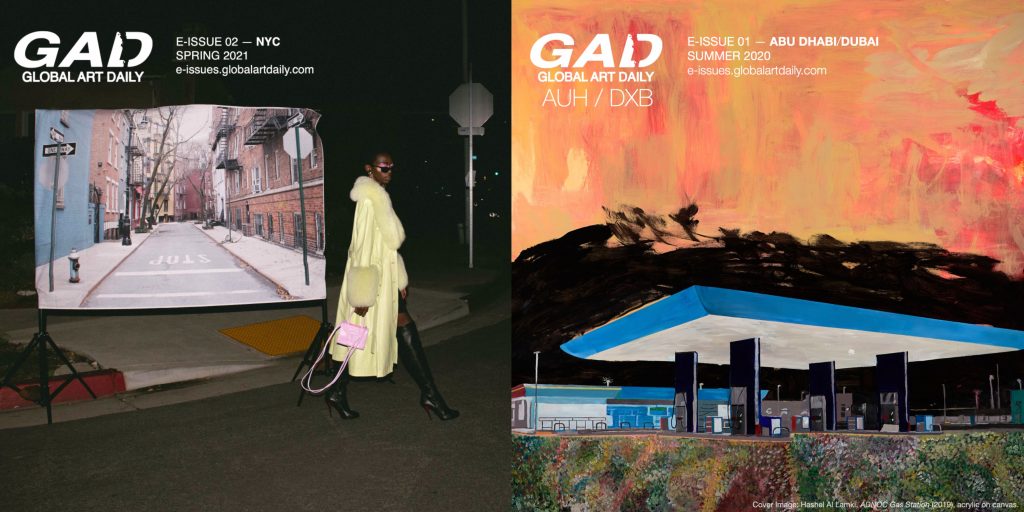Nile Koetting’s latest work, “Remain Calm” (2019-), has been featured in six projects in four countries around the world, and was also exhibited at Anticorps (2020) at the Palais de Tokyo in Paris, rocked by a lockdown under the state of emergency. The work is a site-specific performative installation that improvises in alignment with the viewer, the environment of the performance, and other indeterminate elements of the work space. We spoke with Koetting, who is currently based in Berlin.
A “closed ecology” that amplifies the creativity of the performers and encompass the audience
Could you give us an overview of this work?
The original idea came from the fieldwork I did two years ago when I was staying in an artist residence in Paris. There are many museums along the Seine River in Paris, and they often have to evacuate their works due to flooding. So each museum has a manual in place, and I wanted to do some research on them. I spoke with the security people at several museums and focused my research on how to restore artworks, how to preserve them, and how to care for them in times of crisis.
In the process, I remembered the evacuation drills at my elementary school. They would play the sound of things breaking through the speakers, we’d hide under a table, and escape outside when teachers instructed to. This situation—where everyone was in the same time and space and situation, a simulation—seemed like the plot of a play, playing out in a public theater.
Performances and plays always assume the presence of an audience, but what I’m interested in is the transformation of the performers themselves, and the sharing of their emotional appeals with the audience. The evacuation drill really resonated with what I had been researching, so I gradually thought of a work as a simulation of evacuating works of art.
In this project, the performers are simply repeating their tasks, but when it is presented as a “work of art” in a museum, the performers’ bodies become a part of the work. By holding the paradox of “transforming into a work of art while preserving works of art” within the work, and by continuing to stay the paradox, we create a “closed ecology.”
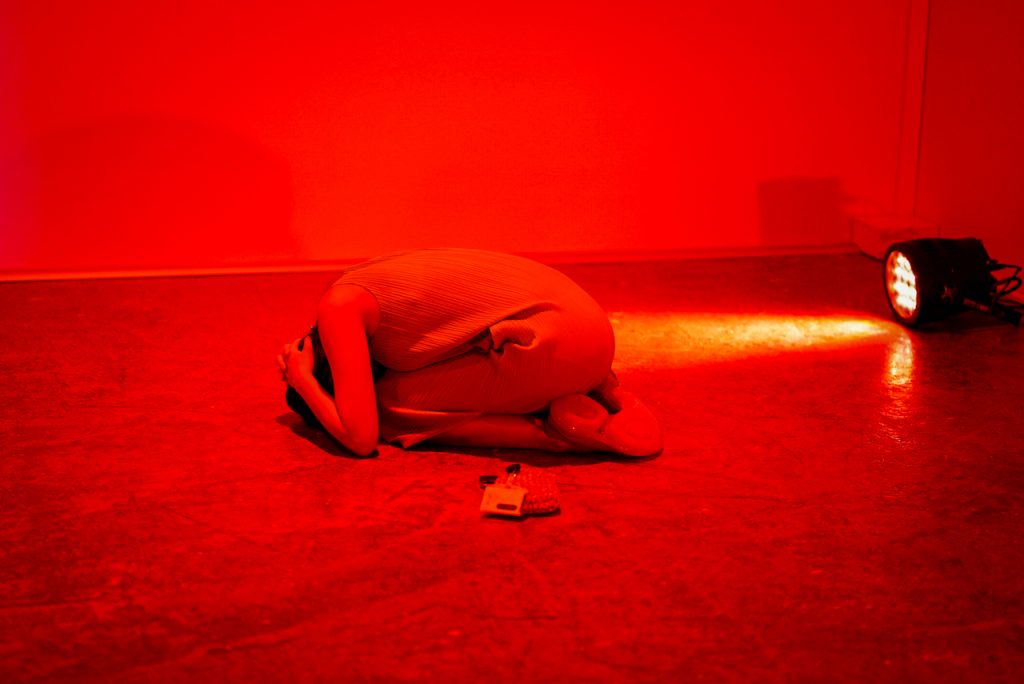
What was the difference between your performance in Shanghai, where there were no environmental constraints, and your performance now, when everyday life itself has become a disaster?
I was also wondering what would happen in that regard. The titles and concept of the work are partly in response to the current situation, so there is more flexibility for interpretation by the viewers. Among other things, the Paris exhibition required performers to wear masks and carry hand sanitisers , but I was surprised to find that realizing the project under these restrictions did not interfere with the piece, but rather emphasised its reality.
What I always value in realizing a project is allowing it to have “room to expand” that even the work itself cannot control. I see my work is not targeting a direction, but rather expanding and swallowing everything that comes its way, like a universe unto itself. The work is designed to encompass the audience and the performers, and I think the work becomes more complex when the audience finds different narratives and meanings in it. I think it is precisely because of the critical and restrictive situation that my essential principle of “keeping the work open, not closed,” worked.
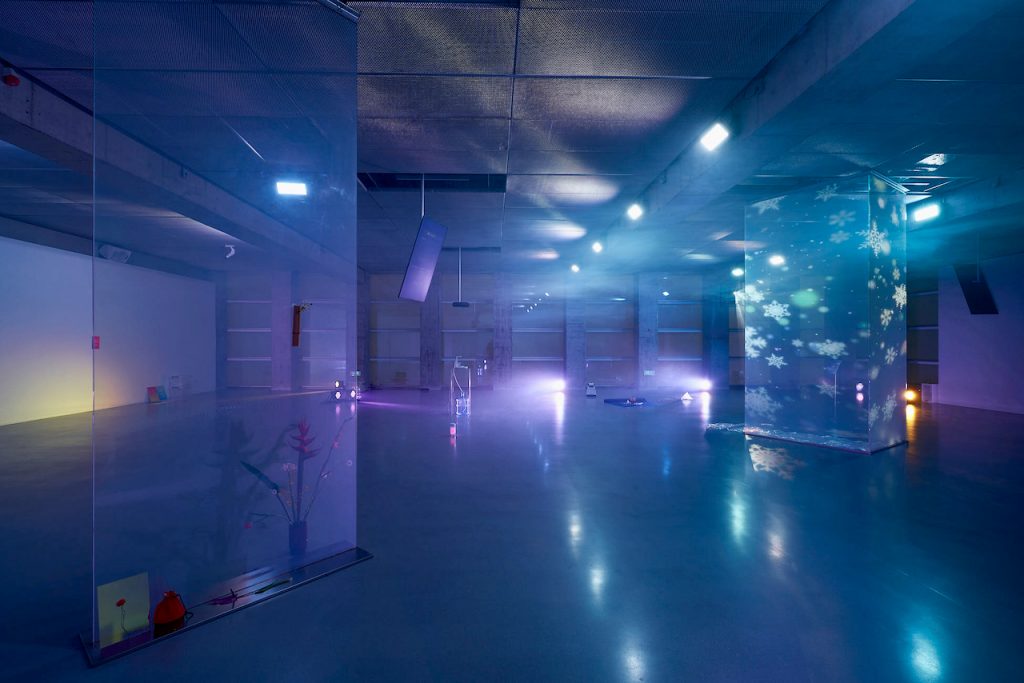
The phrase “closed ecology” that you mentioned earlier left an impression on me. I thought that while the work was open, it was the ecology within it that allowed it to retain its core.
In my works, I don’t want the collaborators to shine, but rather to be absorbed into the project as artists, including myself, and I believe that by being together in a closed space, diverse creativity can emerge. It is important to create a structure that places the performers in a place where the concept of the artist becomes less important, and once the structure is in place, it becomes a “closed space” that can take in a variety of things. It’s like the most important safety net in creating a work of art. The wind that blows there, and the audience that moves there, will always create the work. I often think about “rendering” the works that form in the exhibition every day.
Maybe that’s why the “solidarity” in your work doesn’t seem fake to me.
For a structure like solidarity and connection, you need to bring yourself to a place where you are in control. If you don’t know yourself well, you can’t connect with others, just like you can’t access anything without an IP address.
This society we live in doesn’t remotely give us any opportunity to feel individuality or like an individual. So when I think about how we connect with others in society, I feel more comfortable with a collective connection, a paste, where there is individuality but no individual, and I think it’s a similar feeling in creating an ideal relationship. I am interested in collective aggregates rather than individual textures.
That’s what you call “sustainability” right? More than sustainability in general, you aim for “coexistence,” and that coexistence is not based on fiction, but more like everyone being inside a vessel.
In that sense, “Sustainable Hours” (Les Liaisons Ambiguës exhibition at Maison Hermès in Ginza, Tokyo/2016) was the first time I gave form to my ideas of sustainability, time, and how to interact with my audience, and it was a work that allowed me to create a lot of gray zones.
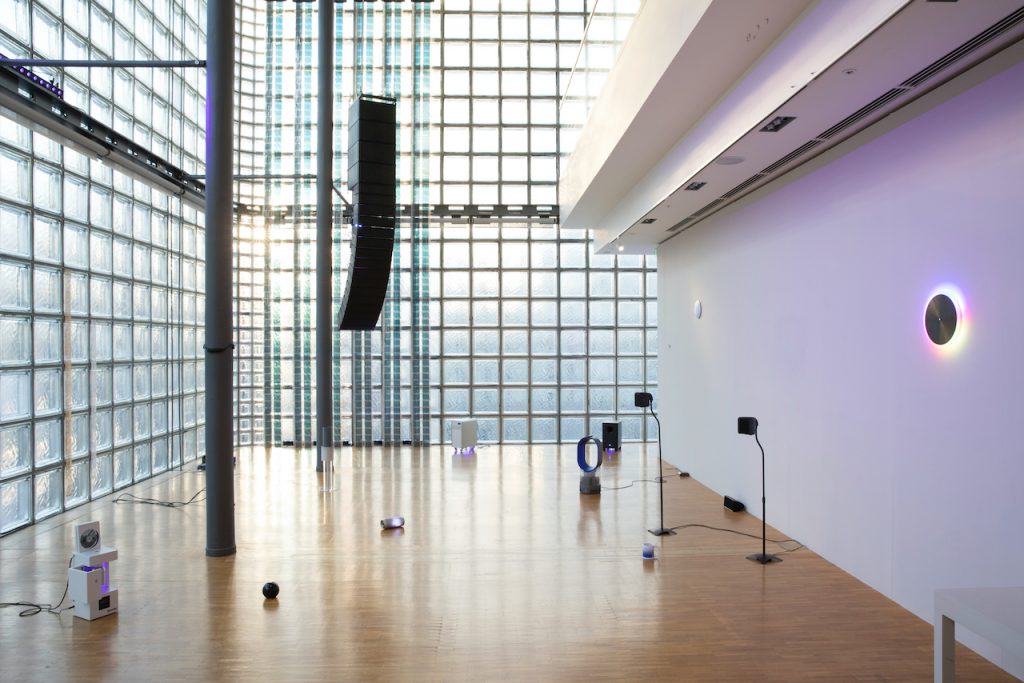
As an artist, I have felt the fear of unconsciously using art institution systems that have long been shaped by history. It made it difficult to see a future in presenting work for innovation and newness. It seemed like a never-ending game. If that’s the case, why don’t we create a gray area that neither of us was aware of by leaning from institutions ? By doing so, the space of art institutions and works of art itself will take on a more site-specific meaning. I was wondering if it would be possible to feel and enjoy that materiality of institutions once again.
A work becomes a work of art through the constant finding of solutions.
When you appeared on Cashmere Radio, you said, “When it comes to art, mistakes and errors become part of the work.” I want to ask you about the intention of this and why you’ve made works with plot r timelines.
Recently, as a result of the acceleration of capitalism, somehow the distinction between the original performance itself and the performance to be shown to people as show business has become blurred. But originally, dance and performance were devices and methodologies to connect with the divine and the superhuman. What I was interested in was that kind of holistic performance, and the movements and methods in dances and local rituals are strong forces, that can’t be controlled or organized but from which a kind of protocol comes out. It is very sad that performances and dances become events that only make assumptions about their audience.
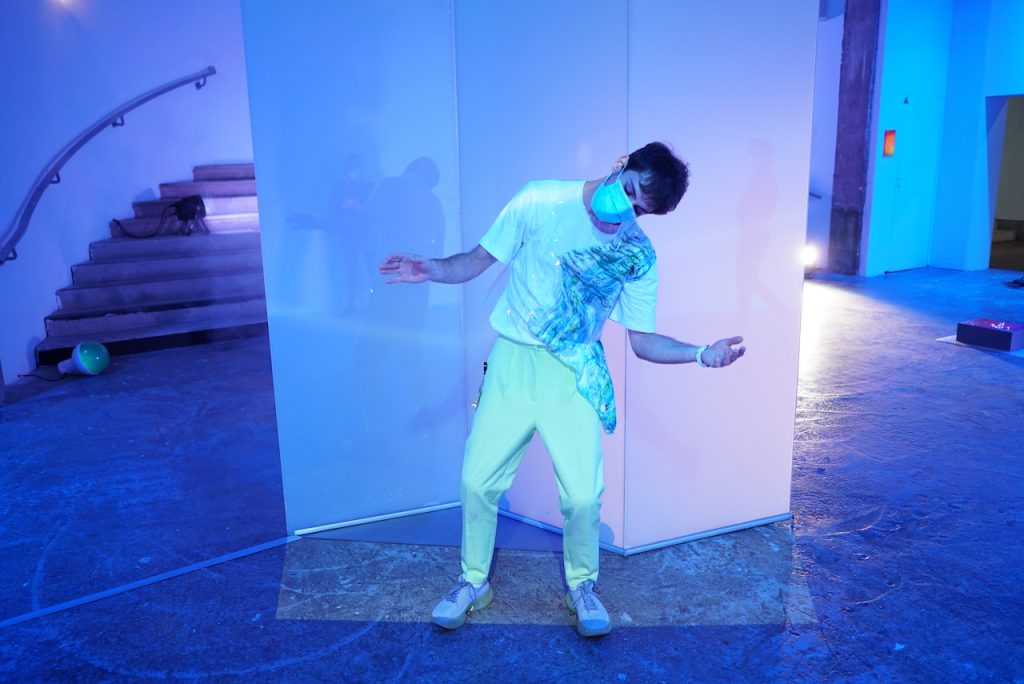
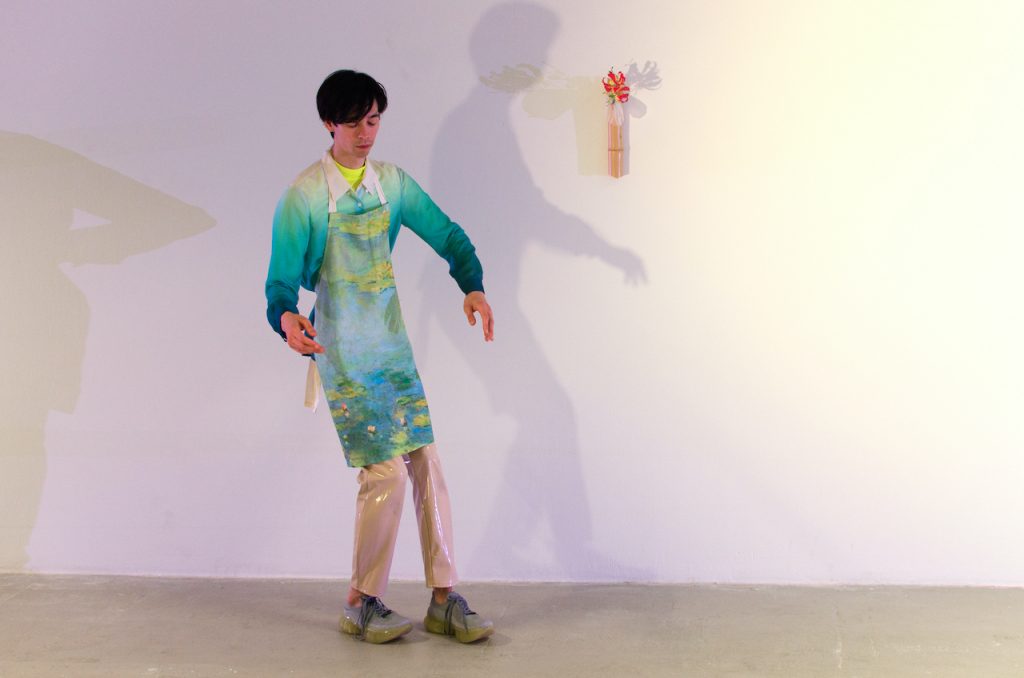
For example, when I am involved in other people’s work as a performer, I feel a lot from the process of creation. It’s not just about showing the work to others. I think it’s one “performance” that also consists of the part not shown—the many errors and mistakes. I want to see the changes in movement and space, not only in the actual performance, but also in the warm-up and rehydration, and I want to be engulfed by it. If you eliminate failures, it becomes just something to show people. I want to feel something beyond that.
There’s a big difference between a work failing and a failure happening in a work. Especially in “Remain Calm,” I have technology that I use to frame it properly and give it a structure like a mattress. I used a lot of technology in order to create a space that catches errors in the images or light sources.
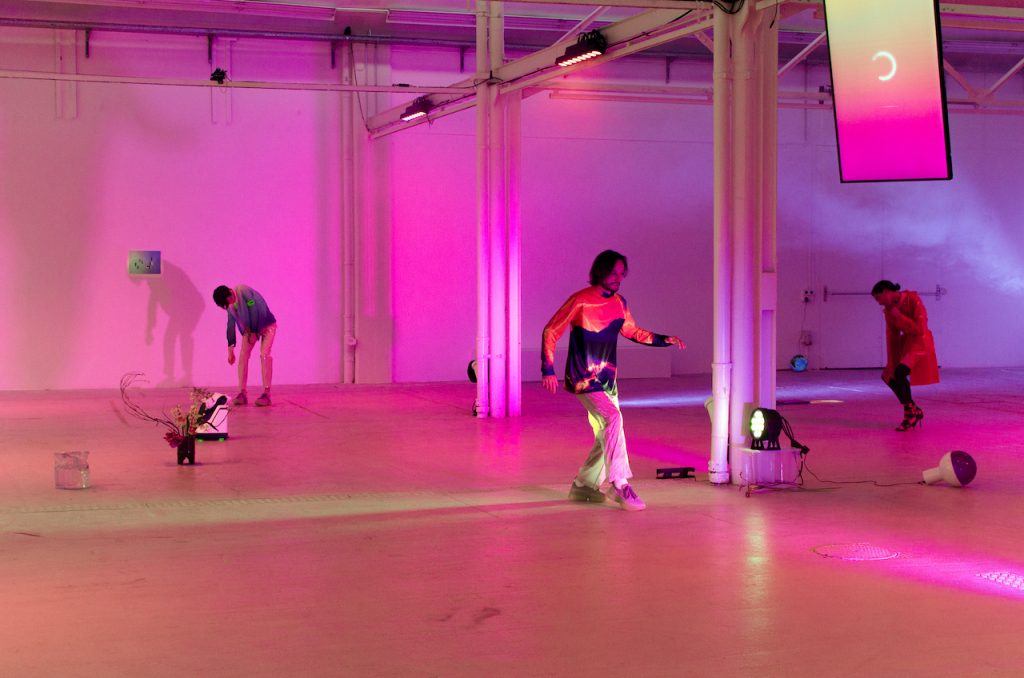
I was expecting a bleak performance because of your theme of “disaster,” but the space was so comfortable that I could have watched the work for hours. I think it was the functioning of the ecosystem for the audience was so important.
That’s right. When you’re working with a real person, you want to get to know that person, and you want to see the texture that makes that person interesting. If I make a rule that says, “You can’t make mistakes,” I feel like that would become a plot point. For that reason, in my performances I give instructions to the performers, but I also tell them that it’s okay to ignore the instructions, especially now with the coronavirus, if there are too many people in the exhibition room and they feel unsafe, they can leave the room. A work of art is made up of the elements of the moment, and they’re always being “solved” as it goes along.
Is it a work of art even in the midst of being solved?
Yes. For example, if a performer is confused or unsure of what to do, they have to solve the problem in some way, right? They will find a way to solve the problem by following my instructions, or leaving the room or perhaps getting a drink of water. The space itself, where they troubleshoot in this way, is the work. In my mind, a good performer is not someone who has “good moves” but someone who can troubleshoot problems in a good way. I want to work with people like that, and I want to be involved with them.
As a viewer of the work, am I in the work or am I a bystander? I was torn between the two.
In this sense, I feel comfortable with the idea of scenography (in the performing arts). There is a very good section in Bruno Latour’s book “Down to Earth: Politics in the New Climate Regime” (Shin Hyoron, translated by Kumiko Kawamura), in which he compares the current world to a stage.
He wrote that today, the decorations, the backdrop, the entire building, leap to the center of the stage and compete with humans for the leading role. The entire script, even the ending, is rewritten. Nowadays, humans are not the only actors. However, I believe that humans themselves still have an important role to play, even though they are far removed from reality.
I think it’s okay if the scenography swallows up the viewer and the performer more and more, to the point where you don’t know where the work begins and ends. In that sense, “scenography” really gets at what I want to express.
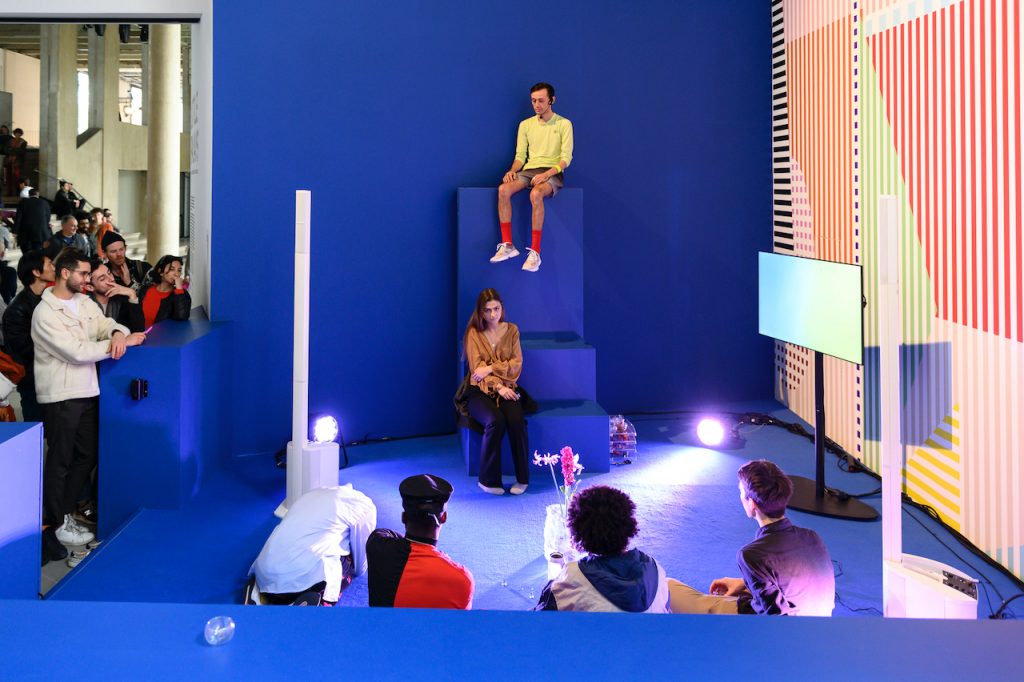
Sensitivity to constantly accessing new networks
While the experience of viewing your works often includes being impressed by your knowledge and techniques, and your imagination, I believe that your works also have a healing effect. This was also the case with “Sustainable Hours” and “Whistler” (@ Yamamoto Gendai/2016). It was very pleasant to watch the colors change as dusk fell.
One of the elements that makes me really happy is that the people involved in the project also have something to gain. When I see curators and other artists coming into my room and taking a breather, I feel that I’ve been able to do something meaningful in these moments. In a previous exhibition in Hannover, Germany, the curator made coffee for my work every morning… so I turned the curator into a barista (laughs).
When you do this every day, it becomes a ritual. A curator makes a cup of coffee, puts it in the installation, and goes back to the office to start working. I’m really interested in things that are close to that level of feeling. When I set up instructions, I’m also aware of breaks and their timing so that the performers don’t get tired. It’s like being a tour coordinator.
Your works seem far from the most internet-accessible, with a name ready to go viral. The experience we get from your work is difficult to find on the Internet. But not everyone works hard every day to put out their best work, so they can slap on a catchy title. It suddenly occurred to me that perhaps that’s why cat videos—which are far from productive, and entirely unambitious—have become so popular, and maybe that’s why they are so healing and energizing for people.
What we get from a kind of uneventful work appeals to a completely different part of our senses than works directed toward us. I want to continue to be radical and punk but in a way that brings healing and vitality. I don’t think being a punk is only about breaking the rules. In today’s society, you can be a punk by following the rules 1000%. I often ponder what it means to be radical these days.
Let me dig a little deeper into that idea of “punk” and “radical.”
I feel there is so much deception in society, I feel that being honest is becoming more and more radical. I think the reason why children, or non-human beings such as animals, and bacteria are looking radical is because humans get by so well with constraints.
This may be a little off, but I feel that the presence of ikebana in your works also has a high affinity with radicalism. Nowadays, ikebana looks even more radical.
What I am interested in is ikebana (Japanese flower arrangement) as a ritual. It doesn’t matter what form the ikebana takes in the end, I’m interested in the protocol that happens with it. With tea, too, rather than the final “taste of the tea,” there is a protocol to get to the point of drinking the tea, and the output is like a way station to go through the protocol. I am interested in what kind of protocol moves people in ikebana, tea ceremony, and flower arrangement.
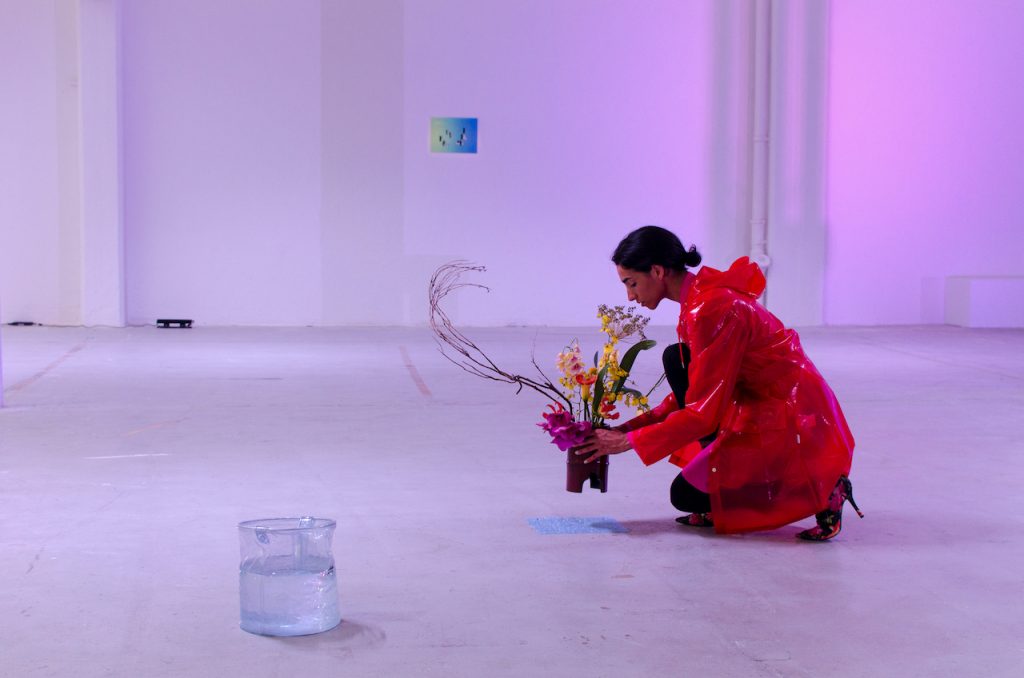
For example, going to an office, working in an office, and putting “Dear” at the beginning of an email is all protocol, and the way we type an email and end a sentence is all choreography. We are not looking for a new output there, but rather we are working through the relay point by following that protocol. In that sense, I think performance is also a protocol. There just happens to be an audience at the relay point, and it just happens to be a work of art. Ikebana is a good example of feeling this way.
I feel that because we were always looking for newness, newnessthemselves became less radical.
What is not good for me is for society to be oriented in one direction. Artists should always be aware of this, and if we can create something that makes people realize that the work—not the work itself, but the process it is created—is something different, then I think that gives the creation of art meaningful.
I want to create works that are not just “interesting because it’s new and there’s a huge response online,” but also because I am impressed by the way the person talks, the fashion, the way they work, and their lifestyle.
The demands of the times are fast and strong, so if we (humans) don’t stand firm and intentional about originality, we could get swept aside.
Originally, you used to be able to show your character with the slightest effort without having to do anything particularly grand. But now with social media, it’s impossible to grab attention like that. I feel that it is becoming necessary for both the viewer and the creator to be really perceptive.
Lately, I’ve been thinking a lot about what it means to be sensitive. My idea of being sensitive is not the sensitivity of one’s skin or emotional sensitivity, but the sensitivity to perceive other networks and the ability to constantly access new ones. It would be even more interesting if artists, audiences, and organizers could further increase the power of sensitivities, and not just the representation of individual thoughts, but experimentation with sensations and thoughts that cannot be felt individually, through art and non-art I believe that we will be able to access an even more interesting network.
